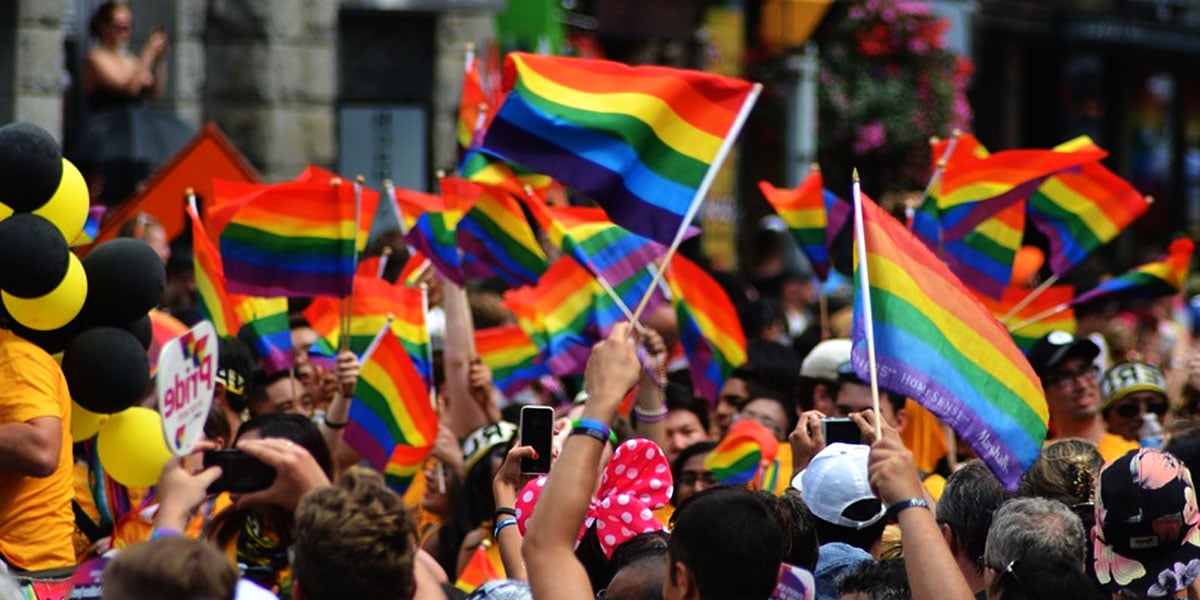
On June 28, 1969, the police were called to the Stonewall Inn at 51-53 Christopher Street in downtown Manhattan. The bar was operating without a liquor license, since the N.Y. State Liquor Authority did not give out licenses to establishments that served gay patrons. Despite being paid off to look the other way, the police entered with a warrant and started handcuffing each and every one of the 200 patrons, which inevitably drew a crowd.
One of the women arrested was hit over the head by a police officer. She begged the crowd to “do something,” since she was in handcuffs and was unable to defend herself. The crowd started to throw pennies and objects at the police, left with no other real option. The crowd continued to grow, and soon hundreds of people started to riot outside. Ten police officers barricaded themselves within Stonewall, but the crowd set fire to the barricade. The police were rescued by the fire department and Tactical Police Force. Over the next six days, thousands of people came to protest and express solidarity with those who had been arrested at the Stonewall Inn.
The Stonewall Inn was, and continues to be, an LGBTQ (lesbian, gay, bisexual, transgender and queer or questioning) institution and safe haven. It has always been a space in which people who do not feel accepted by the outside world have felt at home. When the raid happened in 1969, homosexuality was actively criminalized— “sodomy” was a punishable offense. In the same vein, men could be arrested for wearing drag and women could be arrested for wearing less than three pieces of “feminine clothing.” The raid of the Stonewall Inn was traumatic to the community, considering that it was one of the sole spaces in which LGBTQ folks could let their guards down and be their true selves.
Five months after the riots, activists Craig Rodwell, his partner Fred Sargeant, Ellen Brody and Linda Rhodes submitted a proposal to hold a march in New York City at the Eastern Regional Conference of Homophile Organizations (ERCHO). There, it was decided that they would commemorate the riots without a dress code, which was unconventional for the time. Prior activism done by LGBTQ activists required participants to walk in silence and in dress code (a jacket and ties for men, dresses for women).
A year later, the first Gay Pride parade was organized by Brenda Howard, an openly bisexual grassroots activist who was born and raised in the Bronx. Using the mailing list for the Oscar Wilde Bookstore on Christopher Street, Howard and Rodwell were able to get the word out about the event. Not only was it meant to commemorate the Stonewall Riots, but it was Howard’s idea to turn it into a week-long celebration, much like it continues to be today.
Pride is important because the LGBTQ community continues to be persecuted for their sexual and gender identities. This month alone, five trans women have been murdered: Johana Medina Leon, Chynal Lindsey, Chanel Scurlock, Layleen Polanco, and Zoe Spears, all of whom were under the age of thirty. A lesbian makeup artist was fired by a bride after learning about her sexual orientation. And in 2016, Omar Mateen opened fire in Pulse, a gay nightclub in Orlando, Florida, killing 49 people and wounding 53 others. Although a raid on a bar that didn’t have a liquor license feels distant today, it is closer and even more visceral than it should be.
Through knowing the history of Pride, we can better understand how much more work there is to be done. Although “sodomy” is no longer criminalized, and although women are no longer arrested for wearing masculine garb, those laws that were in effect fifty years ago still have resonance in American culture today. And through knowing the history of Gay Liberation, we can further unearth the seeds of hatred that were once planted in our legislation, in order to prevent further violence against the LGBTQ community.
Some of the links on this website are affiliate links, and as an Amazon Associate, we may earn an affiliate commission from qualifying purchases – at no cost to you.
This website is for informational and/or entertainment purposes only and is not a substitute for medical advice, diagnosis, or treatment.
© 2025 Drew Pinsky Inc. | All Rights Reserved
Get alerts from Dr. Drew about important guests, upcoming events, and when to call in to the show.
For text alerts, msg and data rates may apply